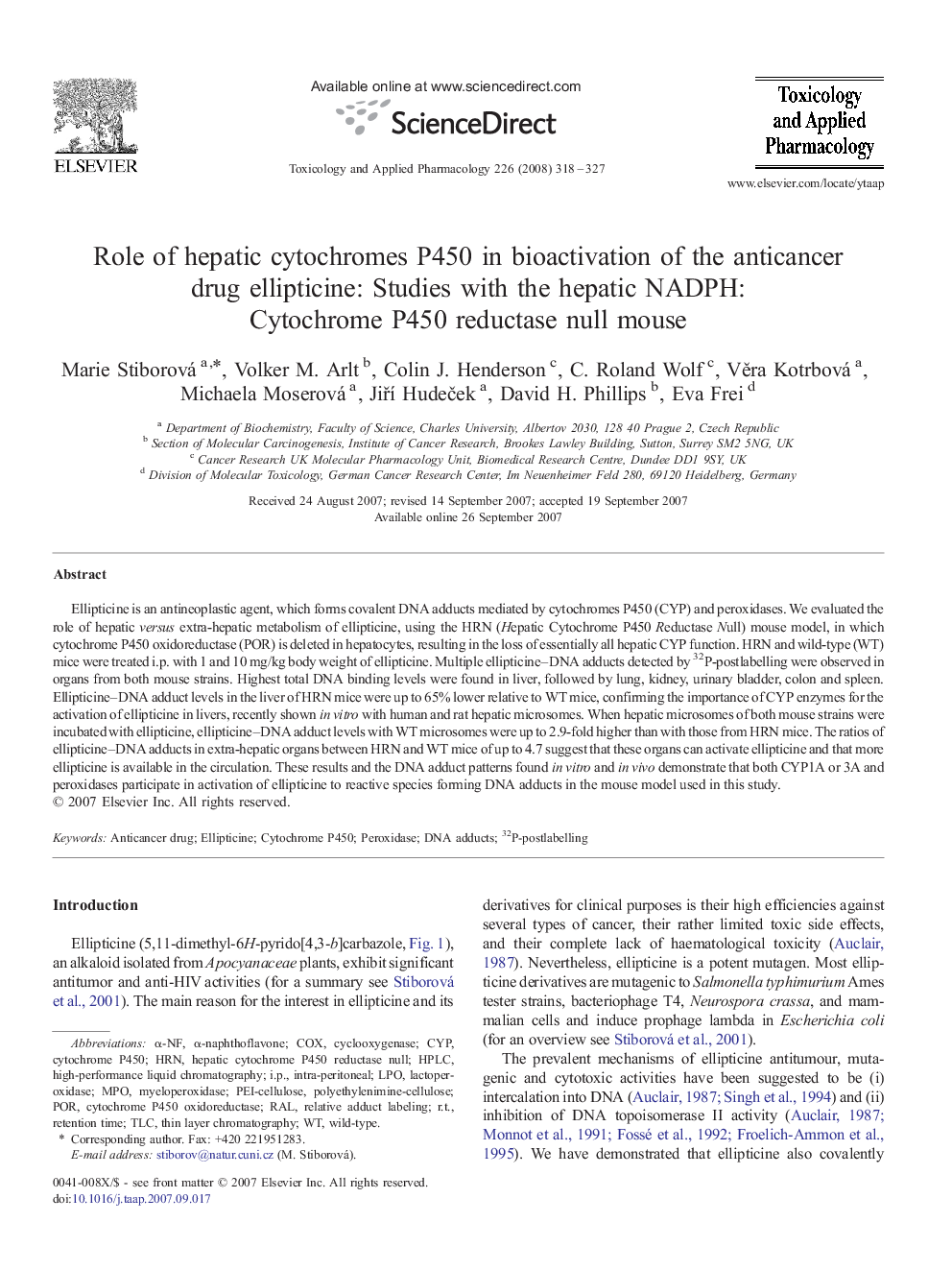| Article ID | Journal | Published Year | Pages | File Type |
|---|---|---|---|---|
| 2570691 | Toxicology and Applied Pharmacology | 2008 | 10 Pages |
Ellipticine is an antineoplastic agent, which forms covalent DNA adducts mediated by cytochromes P450 (CYP) and peroxidases. We evaluated the role of hepatic versus extra-hepatic metabolism of ellipticine, using the HRN (Hepatic Cytochrome P450 Reductase Null) mouse model, in which cytochrome P450 oxidoreductase (POR) is deleted in hepatocytes, resulting in the loss of essentially all hepatic CYP function. HRN and wild-type (WT) mice were treated i.p. with 1 and 10 mg/kg body weight of ellipticine. Multiple ellipticine–DNA adducts detected by 32P-postlabelling were observed in organs from both mouse strains. Highest total DNA binding levels were found in liver, followed by lung, kidney, urinary bladder, colon and spleen. Ellipticine–DNA adduct levels in the liver of HRN mice were up to 65% lower relative to WT mice, confirming the importance of CYP enzymes for the activation of ellipticine in livers, recently shown in vitro with human and rat hepatic microsomes. When hepatic microsomes of both mouse strains were incubated with ellipticine, ellipticine–DNA adduct levels with WT microsomes were up to 2.9-fold higher than with those from HRN mice. The ratios of ellipticine–DNA adducts in extra-hepatic organs between HRN and WT mice of up to 4.7 suggest that these organs can activate ellipticine and that more ellipticine is available in the circulation. These results and the DNA adduct patterns found in vitro and in vivo demonstrate that both CYP1A or 3A and peroxidases participate in activation of ellipticine to reactive species forming DNA adducts in the mouse model used in this study.
